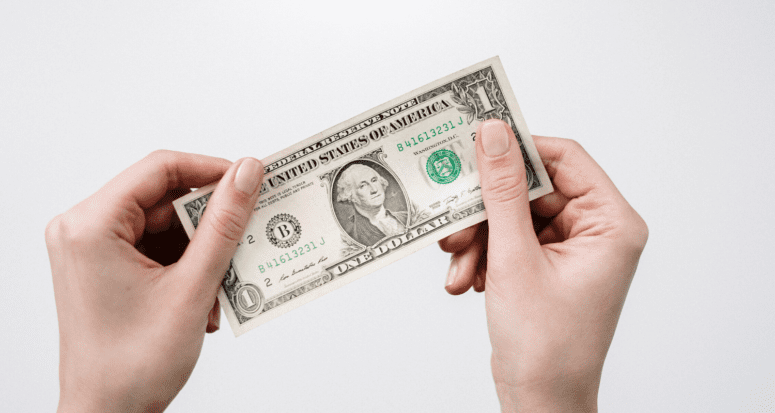Does Down Payment Assistance Still Exist During Coronavirus?
- Published on
- 2-3 min read
-
 Alesandra Dubin Contributing AuthorClose
Alesandra Dubin Contributing AuthorClose Alesandra Dubin Contributing Author
Alesandra Dubin Contributing AuthorAlesandra Dubin is a lifestyle journalist and content marketing writer based in Los Angeles. Her vertical specialties include real estate; travel; health and wellness; meetings and events; and parenting. Her work has appeared in Business Insider, Good Housekeeping, TODAY, E!, Parents, and countless other outlets. She holds a master's degree in journalism from NYU.
It’s hard to overstate the impact of the coronavirus pandemic on life in America, with a record number of Americans seeing a reduction in their income or facing unemployment (to the tune of 30 million new claims between mid-March and the end of April 2020). As part of a sweeping response to the crisis, the federal government passed the CARES Act — that’s the Coronavirus Aid, Relief, and Economic Security Act — which includes stipulations that lenders must provide mortgage relief to borrowers who have been impacted.
But what about the would-be homeowners, who have yet to enter the housing market? Some in this group of first-time homebuyers are depending on down payment assistance — and are wondering whether or not such assistance still exists in the realm of possibility.
In short, yes, it does — but it’s going to be harder to get, and you may expect to face delays. Here’s our expert-sourced backgrounder on down payment assistance, who can get it, and what’s available in the pandemic.

Who can get down payment assistance?
One category of buyers who can get down payment assistance is first-time buyers. And that’s actually a more broadly defined category than the term would seem to imply: According to HUD guidelines, you can be a former homeowner, but you can’t have owned a house for the past three years.
You also qualify as a first-time buyer if you:
- Are a single parent who has only owned with a former spouse while married
- Are a displaced homemaker who has only owned with a spouse
- Have only owned a principal residence not permanently affixed to a permanent foundation
- Have only owned a property that was not in compliance with building codes and which cannot be brought into compliance for less than the cost of building a new permanent home
Your access to down payment assistance depends on other factors, too, such as your income. “Usually, it’s somebody with a more modest income,” explains Dale Mattison, a top-selling agent based in Maryland.
“Broad generalization, it’s probably 80% or less of the adjusted median income nationally or for a particular region — but that can vary region to region, or state to state, or city to city, depending on which entity is providing those funds.”
What kind of down payment assistance is available?
Assistance may come in the form of grants (which you don’t have to pay back) or loans (which you do).
Some loans are zero-interest and forgivable, which means they expire with no penalty or interest accrued after a certain period of time; a good example of this is HUD’s Good Neighbor Next Door program.
While HUD itself isn’t giving out the down payment assistance, some local groups that do could require borrowers to take a counseling course approved by HUD meant to help borrowers understand and negotiate the homebuying process.
Down payment assistance is usually issued by state or local government agencies but is also available federally. Let’s look at an example of how much the assistance programs can range regionally.
“We have a program in Washington, D.C., that will loan a moderate-income person or family up to $80,000 to use for down payment, and in addition to that, another $4,000 to be used toward closing costs,” Mattison explains, describing a portion of his own territory.
“If I go across the line from D.C. into Maryland, the Maryland program is very much different — so you’re probably talking about $10,000 toward down payment and closing costs. So it’s really going to vary jurisdiction to jurisdiction.”
Is down payment assistance available during the coronavirus pandemic?
Although down payment assistance programs might be available right now in theory, it’s likely that agencies overseeing them are simply overwhelmed.
Consider that some of them, such as the FHA, might also be involved in mortgage relief efforts for homeowners who have lost income and are struggling to pay — and the size of that group is astronomical, given the crisis.
So theory and practice could diverge if you’re seeking down payment assistance — but it is technically still out there.
“There’s a little uncertainty with respect to down payment programs, particularly if they’re government-oriented,” Mattison says. “Most of these programs come from local or state governments, and so obviously all of the government entities are facing some very significant financial strains as they are not receiving the sales tax income and other areas where they normally derive their fiscal operating costs.”
And that means, “there could be some curtailment. There could be some postponement of funds that were normally set to be used for these programs.”
He adds that your chances of getting down payment assistance are going to vary substantially by jurisdiction — and you might have to steel yourself to test the limits of your patience while you explore your options, too.
“You’re likely to see just a significant slowdown in processing,” Mattison says. “Particularly if you’re working within an area where there’s still a lockdown, there could be a lockdown in processing speed, so you have to watch out for that as well.”

Are there still low-down-payment loans available?
The short answer is yes — but with plenty of caveats.
The FHA, VA, and USDA have not paused their low-down-payment loans, and some conventional lenders might still be offering their own. However, more lenders are imposing overlays, which means that buyers should probably be prepared to bring bigger down payments to the table. You should also make sure your credit is as pristine as possible if you really can’t get a big enough down payment for a loan.
But these loans are still out there. “There are conventional loans with as little as 3% down, and FHA is 3.5% down — and VA is 0% down,” Mattison says.
“It’s a little more of a volatile environment, but they are still, in fact, available — you just have to see if you can fit the guidelines.”
Of course, fitting into the guidelines — especially in the age of widespread overlays during the crisis — can prove more challenging than ever before. But if the short-term picture feels bleak, there’s plenty of optimism to be found on a slightly longer time horizon.
“If you can’t fit the guidelines, hopefully this is a temporary economic pinch,” Mattison says. “Hopefully soon we’ll be out of this and back to a little bit better state of normalcy.”
Header Image Source: (cottonbro / Pexels)
